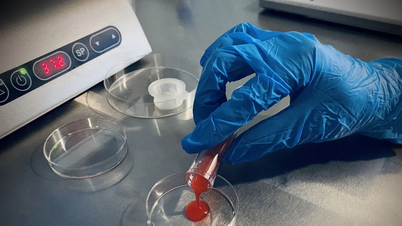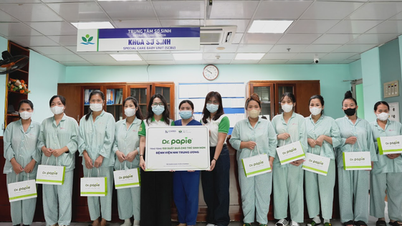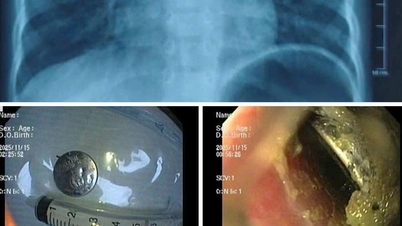In recent years, the issue of microplastics in the human body has moved from an environmental warning to a specific medical concern, and the latest discovery has caught the attention of both the medical community and the public: tiny plastic particles have been detected in the follicular fluid of women undergoing artificial insemination.
Follicular fluid is the medium in which the egg is nourished. The presence of impurities in this fluid raises serious questions about its potential impact on egg quality, hormonal balance, and reproductive outcomes.
Detection and exposure levels
The first study to detect microplastics in ovarian follicular fluid was conducted on patients undergoing infertility treatment and found a significant proportion of positive samples. The plastic particles collected varied in size and composition, and what worried the researchers was that these particles were not just “external” but had penetrated the delicate reproductive environment of the ovary. Several subsequent studies, presented at professional conferences, also noted the presence of microplastics in both ovarian follicular fluid and semen at relatively high frequencies in the sample groups surveyed.

Microplastics under microscope in various sizes.
While initial data are based on small samples and larger studies are needed to assess the full spectrum, a combination of animal and laboratory studies suggests that human exposure may be part of the outcome associated with reduced fertility. At the same time, studies of exposure pathways suggest that microplastics enter the body through ingestion (food, water), inhalation (household dust, air), and dermal contact—meaning daily exposure is difficult to avoid without proactive mitigation.
Potential risk factors for infertility that need to be controlled
Microplastics may impact the reproductive system in two main ways: (1) local mechanical/inflammatory effects, and (2) the delivery of endocrine disruptors. At the cellular level, microplastics have been shown to cause oxidative stress, inflammation, and damage to granulosa cells—cells important in follicular development and hormone synthesis.
Meanwhile, plastics often come with additives such as phthalates, bisphenol A (BPA) or PFAS, which are known to disrupt hormones, alter estrogen and progesterone levels, affect ovulation and reduce the ability of embryos to implant. Experiments on mice and cultured tissues have shown that exposure to microplastics can reduce the number of mature follicles, increase DNA damage in eggs, and reduce conception rates in animal models. Although there is no definitive evidence of cause and effect in humans, this biological link is enough to raise alarm among experts.
Obstetricians and gynecologists, environmental researchers, and clinicians are cautious but unanimous: the finding of microplastics in follicular fluid is “notable and warrants further study” — not enough to say that microplastics are the direct cause of mass infertility, but enough to be considered a potential risk factor that needs to be controlled.
Some experts suggest prioritizing long-term follow-up studies of couples undergoing assisted reproductive technology, measuring microplastic levels in reproductive fluids, and comparing treatment outcomes according to exposure levels. Clinicians should advise patients to take steps to reduce their personal exposure as part of a “proactive prevention strategy” during their reproductive preparation.
Notable risks in Vietnam
In Vietnam, sources of microplastics exposure reflect consumption habits and urban environmental conditions, specifically:
- Packaged foods, fast food, and bottled water — products that come into direct contact with plastic.
- Using plastic bags, food wrap, plastic containers, electric kettles or putting hot food in plastic bags — facilitates the release of plastic particles and chemical additives.
- Tea bags and some food packaging can release nano-/microplastics when heated.
Indoor air (furniture dust, synthetic materials) is an equally important source of inhalation. In industrial or rural areas with heavy agricultural chemical use, interactions between chemicals and plastic particles are an additional concern.
Risk assessments in Vietnam need to incorporate field surveys of microplastic concentrations in tap water, common foods, indoor air, and biological samples — which can differ between urban and rural areas.

Doctor analyzes follicular fluid sample in infertility lab.
How to prevent?
While research continues, there are many simple, actionable steps you can take to reduce exposure in your everyday life:
- Minimize plastic items coming into direct contact with food, especially when hot: use glass or stainless steel containers, avoid using plastic bottles/containers heated in the microwave.
- Limit processed foods and packaged fast foods — these packages are prone to containing microplastics.
- Avoid poor quality plastic/tea bags; drink loose tea or use paper bags/filters made of natural materials.
- Filtering domestic water: Consider a filter that can remove fine particles; avoid drinking bottled water regularly.
- Improve ventilation, reduce dust in the house: vacuum with a machine with a HEPA filter, reduce the amount of plastic furniture and toys.
- Occupational precautions: Anyone working in the plastics, textile, paint or agricultural industries should talk to their doctor about protective measures and exposure reduction.
- When undergoing fertility treatment: talk to your lab/IVF team about how to minimize exposure to plastics during the procedure (standard labs already take care to reduce sources of contamination).
The discovery of microplastics in follicular fluid is a new alarm bell in the global pollution picture: it reminds us that plastic pollution is not just an environmental problem but is creeping into the delicate human reproductive space.
Although a definitive causal relationship between microplastics and human infertility cannot yet be established, the experimental and animal evidence, together with their actual presence in patient samples, is sufficient to justify action on the precautionary principle.
At the individual and policy levels, reducing the use of plastics in direct contact with food, improving plastic waste management, and investing in local research — especially in the Vietnamese context — are urgent actions needed to protect the reproductive health of today and future generations.
Source: https://suckhoedoisong.vn/vi-nhua-xam-nhap-nang-trung-bao-dong-moi-voi-kha-nang-sinh-san-nu-169251114111012159.htm


![[Photo] The Standing Committee of the Organizing Subcommittee serving the 14th National Party Congress meets on information and propaganda work for the Congress.](https://vphoto.vietnam.vn/thumb/1200x675/vietnam/resource/IMAGE/2025/11/19/1763531906775_tieu-ban-phuc-vu-dh-19-11-9302-614-jpg.webp)




![[Photo] Prime Minister Pham Minh Chinh and his wife meet the Vietnamese community in Algeria](https://vphoto.vietnam.vn/thumb/1200x675/vietnam/resource/IMAGE/2025/11/19/1763510299099_1763510015166-jpg.webp)



























![[Photo] General Secretary To Lam receives CEO of AP Moller-Maersk Group, Denmark](https://vphoto.vietnam.vn/thumb/1200x675/vietnam/resource/IMAGE/2025/11/18/1763462288958_a3-bnd-8222-2510-jpg.webp)
![[Photo] General Secretary To Lam receives Slovakian Deputy Prime Minister and Minister of Defense Robert Kalinak](https://vphoto.vietnam.vn/thumb/1200x675/vietnam/resource/IMAGE/2025/11/18/1763467091441_a1-bnd-8261-6981-jpg.webp)












































































Comment (0)